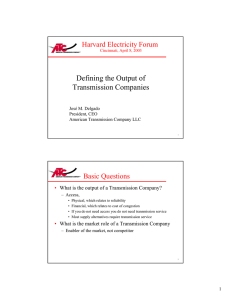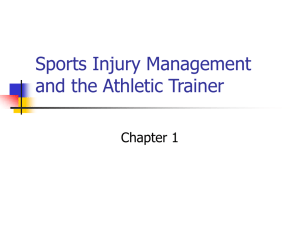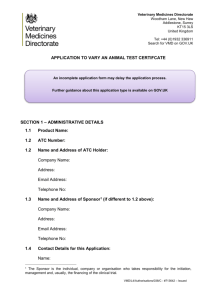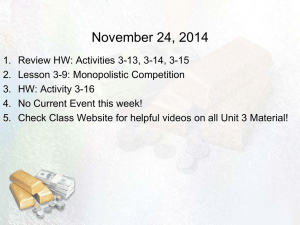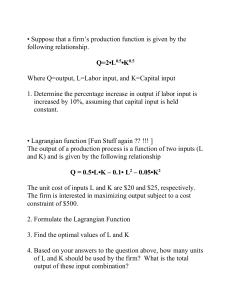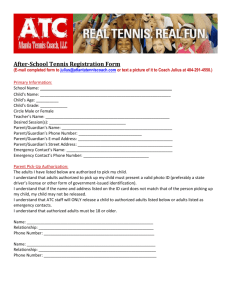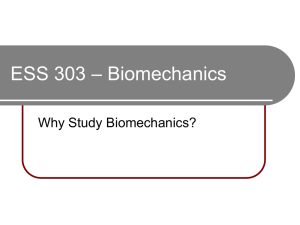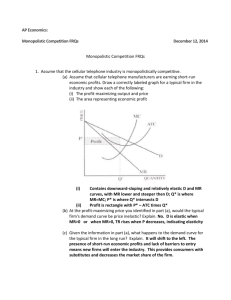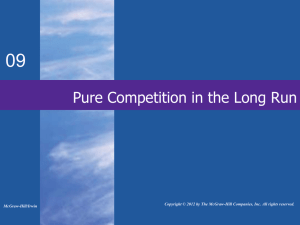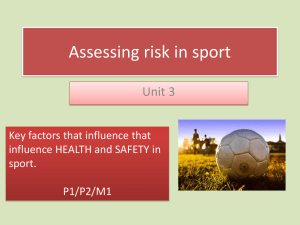Chapter 1
advertisement
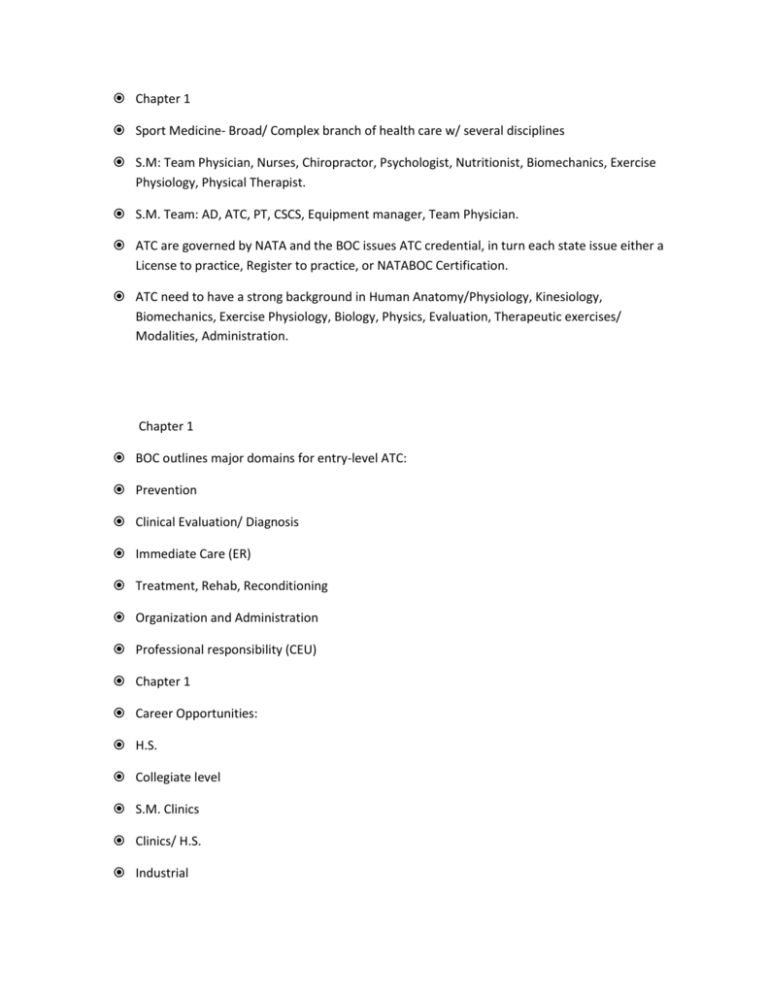
Chapter 1 Sport Medicine- Broad/ Complex branch of health care w/ several disciplines S.M: Team Physician, Nurses, Chiropractor, Psychologist, Nutritionist, Biomechanics, Exercise Physiology, Physical Therapist. S.M. Team: AD, ATC, PT, CSCS, Equipment manager, Team Physician. ATC are governed by NATA and the BOC issues ATC credential, in turn each state issue either a License to practice, Register to practice, or NATABOC Certification. ATC need to have a strong background in Human Anatomy/Physiology, Kinesiology, Biomechanics, Exercise Physiology, Biology, Physics, Evaluation, Therapeutic exercises/ Modalities, Administration. Chapter 1 BOC outlines major domains for entry-level ATC: Prevention Clinical Evaluation/ Diagnosis Immediate Care (ER) Treatment, Rehab, Reconditioning Organization and Administration Professional responsibility (CEU) Chapter 1 Career Opportunities: H.S. Collegiate level S.M. Clinics Clinics/ H.S. Industrial Professional Teams Chapter 1 Legal Considerations: Tort: A civil wrong done to an individual whereby the injured party seeks remedy for damages suffered. Many torts come in different forms: Standard of care is measured by what another minimally competent individual educated and practicing in that profession would have done in he same or similar circumstance to protect an individual from harm or further harm. Scope of care outlines the role and responsibilities of an individual in that profession and delineates what should be learned in the professional preparation of that individual. Negligence- ATC/ coaches are expected to teach, supervise, inspect and provide quality equipment, ensure a safe environment, and provide a duty of care to all sport participants, failure to provide this care can result in a liability. Chapter 1 Legal Considerations: Negligence may occur in five different ways: Malfeasance occurs when individual commits an act that is not his or her responsibility to perform. Misfeasance occurs when an individual commits an act that is his or her responsibility to perform, but uses the wrong procedure, or the right procedure in an improper manner. Nonfeasance occurs when an individual fails to perform his or her legal duty of care. Malpractice occurs when an individual commits a negligent act while providing care. Gross Negligence occurs when an individual has total disregard for the safety of others. Chapter 1 Legal Considerations/ Protecting Yourself Protection to limit liabilities • Informing the athlete about the inherent risks of sport participation • Foreseeing the potential for injury and correcting the situation before harm occurs. • Obtaining informed consent from the athlete or his or her guardian prior to participation in the sport and prior to any treatment should an injury occur. • Using quality products and equipment that do not pose a threat to the athlete. • Maintaining strict confidentiality of all medical records. Foreseeability of Harm is any danger that is apparent. Informed consent implies that an injured party has been reasonably informed of needed treatment, possible alternative treatment, and advantage and disadvantage of each course of action. Chapter 1 Legal Considerations/ Protecting Yourself Product Liability- Two types of product liability: 1. Implied warranty- Manufactures have a duty of care to design, manufacture, and package safe equipment that will not cause injury to an individual when the equipment is used as it was intended. 2. Expressed warranty is a written guarantee that the product is safe for use. Good Samaritan Law was developed to encourage bystanders to assist others in need of emergency care by granting them immunity from potential litigation. Law varies from state to state, it generally applies only when the emergency first aider (1) acts during an emergency (2) acts in good faith to help the victim, (3) acts without expected compensation, (4) is not guilty of any malicious misconduct or gross negligence toward the injury party. There are loop holes in the law and should not be relied on to protect the person.

